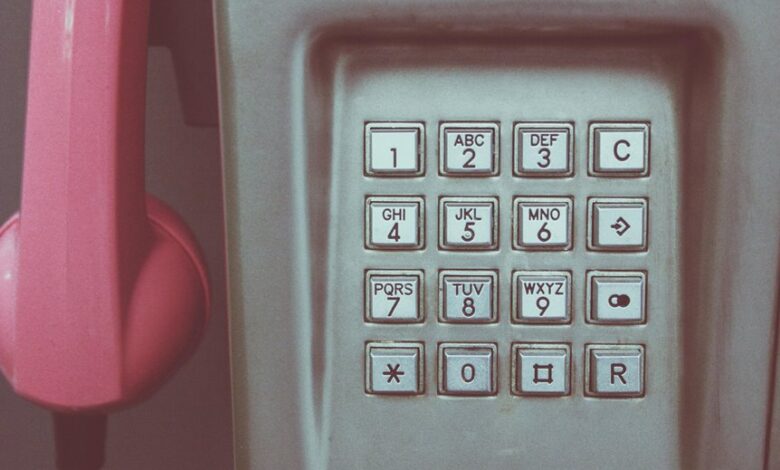Trace Callers Instantly: 3155086148, 3158495499, 3163529980, 3167685288, 3168441039, 3172681157

The growing prevalence of unfamiliar phone numbers, such as 3155086148 and others, raises intriguing questions about caller identity and privacy. Many individuals experience anxiety over unknown calls, often wondering about the intent behind them. What tools exist to effectively trace these callers? Understanding the capabilities and limitations of online reverse phone lookup services could provide valuable insights. As the conversation unfolds, the implications of these tools on personal security come into sharper focus.
Understanding Caller ID and Its Limitations
Although Caller ID has become a staple feature in modern telecommunications, its reliability and accuracy often raise questions.
Many users encounter caller ID limitations, such as spoofed numbers or incomplete information, leading to privacy concerns.
This raises a critical inquiry about the effectiveness of this technology in protecting individuals from unwanted calls and ensuring transparency in communication, ultimately affecting personal freedom and security.
Online Reverse Phone Lookup Tools
The limitations of Caller ID prompt many individuals to seek alternative methods for identifying unknown callers.
Online reverse lookup services leverage extensive caller information databases to provide insights into unfamiliar numbers.
These tools enable users to uncover the identity behind a call, enhancing personal security and offering peace of mind.
Mobile Apps for Caller Identification
As technology continues to evolve, many individuals turn to mobile apps for caller identification as a convenient solution to identify unknown numbers. These caller identification apps enhance mobile phone security, allowing users to screen potential spam or scam calls effectively. The rise of these applications prompts a deeper inquiry into their features and reliability.
| App Name | Features | Security Level |
|---|---|---|
| Truecaller | Caller ID, SMS Spam | High |
| Hiya | Call Blocking | Medium |
| Whoscall | Number Lookup | High |
Reporting Spam and Scam Calls
In the landscape of telecommunications, understanding the patterns of spam and scam calls is crucial for users seeking to protect themselves.
What reporting procedures are in place to address these unwanted interruptions, and how effective are they in mitigating future occurrences?
Analyzing these aspects can reveal insights into the ongoing battle against fraudulent communications.
Identifying Spam Call Patterns
How can individuals effectively identify patterns in spam calls and report them?
By examining spam call frequency and utilizing caller behavior analysis, one can discern trends such as common numbers and times of day for these disruptive calls.
This analytical approach empowers users to recognize spam patterns, enabling proactive measures to combat unwanted interruptions and safeguard personal freedom from intrusive solicitations.
Reporting Procedures Explained
Although many individuals may feel overwhelmed by the barrage of spam and scam calls, understanding the correct reporting procedures can significantly contribute to the collective effort against these nuisances.
Effective reporting methods often require thorough call documentation, including the caller’s number and time of the call.
Preventing Future Scams
While individuals may often feel powerless against the onslaught of spam and scam calls, understanding the mechanisms for reporting these incidents can play a crucial role in preventing future occurrences. Enhanced scam awareness and fraud prevention strategies empower individuals.
| Reporting Method | Description |
|---|---|
| National Do Not Call | Register to reduce unwanted calls. |
| FTC Reporting | Report scams to the Federal Trade Commission. |
| Carrier Block Options | Utilize services from phone carriers to block spam. |
Privacy Settings and Call Blocking Features
In examining privacy settings, one must consider how these configurations influence the effectiveness of call blocking features.
Are users fully aware of the options available to tailor their privacy preferences, and do they understand the implications of these choices?
Analyzing the relationship between privacy settings and call blocking can reveal critical insights into user control over unwanted communications.
Adjusting Privacy Settings
Many users overlook the importance of adjusting privacy settings and call blocking features on their devices, which can significantly enhance their security and control over incoming communications.
To improve privacy, consider:
- Adjusting permissions for apps that access personal information.
- Managing notifications to limit exposure to unwanted interactions.
- Regularly reviewing privacy settings to stay informed about potential vulnerabilities.
Awareness can empower users to safeguard their digital freedom.
Utilizing Call Blocking Features
Utilizing call blocking features can significantly enhance a user’s ability to manage unwanted communications effectively.
By employing advanced call blocking tools and spam filters, individuals can reclaim their privacy, ensuring that intrusive calls are minimized.
This proactive approach not only fosters a sense of security but also empowers users to choose their interactions, promoting a more liberated communication experience in today’s digital age.
Tips for Handling Unwanted Calls
How can individuals effectively manage the barrage of unwanted calls that disrupt their daily lives?
Implementing strategic unwanted call strategies can significantly enhance one’s peace of mind.
Here are some effective response tips:
- Utilize call-blocking apps to filter unwanted numbers.
- Register on the National Do Not Call Registry.
- Screen calls and only answer recognized numbers.
These tactics empower users to reclaim their time and privacy.
Conclusion
In a world where each ring of the phone might unveil a mystery, utilizing online reverse phone lookup tools transforms mere coincidence into clarity. As one navigates the sea of unfamiliar numbers, the intersection of technology and awareness illuminates the path to safety. By identifying callers, individuals can deftly separate legitimate inquiries from potential threats, much like sifting through a pile of autumn leaves to find a hidden treasure. Thus, understanding and managing unwanted calls becomes not just a necessity, but an art.




